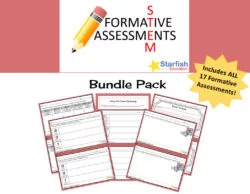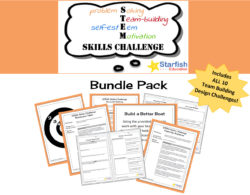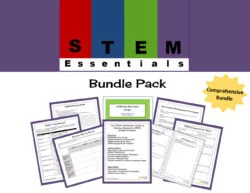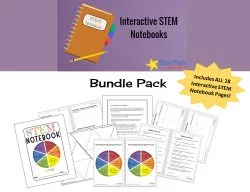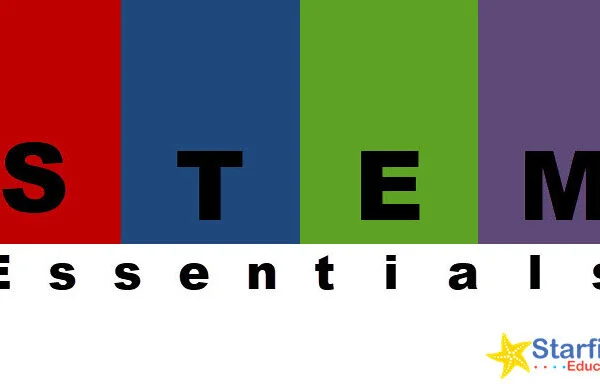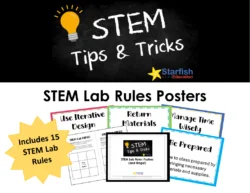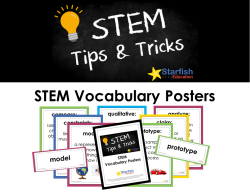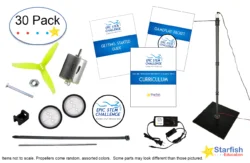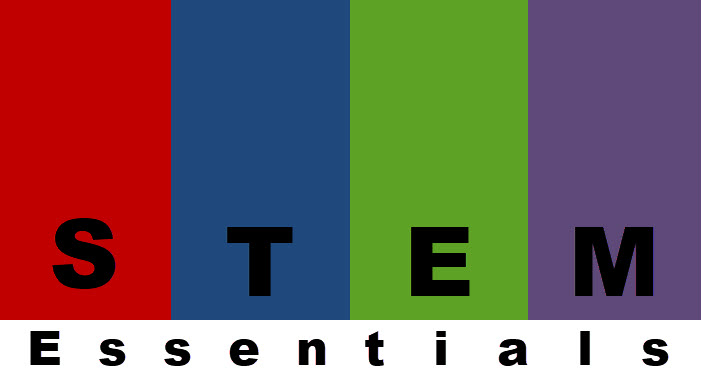
Planning a STEM unit can be very time-consuming if done right, but the outcomes and student progress will be well worth the effort!
STEM projects generally take a good deal of planning on the teacher’s part and are generally complex by nature. There are many components that need to be developed and in place prior to students’ starting their inquiry.
The Plan
The Plan involves selecting a unit or group of curriculum strands that you already teach to use as a basis for your STEM unit. You might select a core unit for your grade level, a group of standards that your students have difficulty with, or even a group of standards that you students find just dead boring. However you decide, you’ll want to make sure that you can make a connection from these standards to a real life issue or problem.
The Assessment
After you have developed a plan that contains your idea, related curriculum standards, challenge, and end product, it’s time to figure out how to assess successful completion of the challenge/project. This backward mapping will help to ensure that all of the pieces tie together cleanly at the end and remains focused and organized.
The Rubric
Now it’s time to consider how you will evaluate the product that students will produce (keeping in mind that your product could take the form of a presentation, portfolio, an actual product, etc.). The rubric will help you, as the teacher, identify what skills, knowledge and outcome you are looking for and will also outline for students how to be successful.
The Student Roles
As we move through the process of designing and developing a STEM unit, we need to consider a framework that students will use to help keep some structure in the classroom, but also to give them the freedom to use their inquiry strategies. When teaching a STEM unit, I put students in teams of 4 and use Role Cards that define each student’s responsibilities. I use different roles for different projects, but no matter which set of cards I choose for project, I photocopy them on card stock and laminate them so that students can actively use them each day.
The Engineering Design Process
Now, it is time to plan the individual lessons that will make up our STEM unit. In other words, we want to find a way for students to learn pieces of the selected curriculum standards that, when put together, will assist them in completing the challenge. A great way to do this is to use the Engineering Design Process as you plan.
The Team Dynamic
When we plan a STEM unit, there are a lot of steps that are part of a linear progression with each step building on the one before. Then, there are other elements (like the Role Cards) that are related and necessary, but don’t seem to fit into a linear progression, like brainstorming and making decisions within the team.
There is no right way to brainstorm, but by providing some strategies and soliciting “Brainstorming Rules” from students to establish a sense of fairness and buy-in, the process will flow smoothly and encourage ideas.
The Communication
One of the last components to is a mechanism for students to communicate their findings. Although it’s last on our planning list, expectations need to be communicated to students early on in the unit. It’s important for students to investigate and record their daily notes and data as well as create formal reports of their discoveries.
The Redesign
After students have communicated their results and shared them with the class, it’s important for students to have time to redesign. This allows for students to process what other teams have shared and leverage that new information into the redesign of their own product, implement a workable solution for struggling teams and take some risks that they wouldn’t have taken prior to presenting their solution to the class.
The Debrief
Debriefing shares some of these same elements, but it is not the same. Debriefing takes place at the end of the project and allows the teacher to pull everyone together to make sure that all misconceptions have been resolved. This is an opportunity for students to share any new information that they have learned, ask clarifying questions that help them further their learning and discuss possible next steps or extensions of the project.
This is also an opportunity for teachers to review key findings and objectives for the project and further tie the learning to real-life.
Get the STEM Essentials Bundle Pack to help plan your STEM Units!
Subscribe to Stay Connected!
-
STEM Formative Assessments- Bundle Pack
$16.95 -
STEM Skills Challenge- Bundle Pack
$16.95 -
STEM Essentials- Bundle Pack
$16.95 -
Interactive STEM Notebook- Bundle Pack
$18.95

